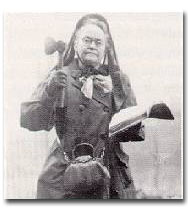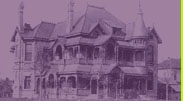OUR LEGACY - The Early 1900's
 A placid Houston stood on the threshold of the twentieth century—a progressive, small city of 45,000. It's economy, rooted in agriculture and distribution, had as yet no inkling of minerals and related manufacturing. When time came, though, its businessmen rose to the occasion in a manner typical of the spirit on which the early city thrived.
A placid Houston stood on the threshold of the twentieth century—a progressive, small city of 45,000. It's economy, rooted in agriculture and distribution, had as yet no inkling of minerals and related manufacturing. When time came, though, its businessmen rose to the occasion in a manner typical of the spirit on which the early city thrived.
On the night of September eighth and into the early monring of the ninth, in the first year of the new century, what became known as the Great Storm of 1900 devastated Galveston. Packing winds of more than 100 miles per hour, the violent hurricane sent fifteen-foot tidal waves crashing across the entire island, destroying most of what lay in its path. By the time the storm subsided, more than 5,000 people had died and thousands more were left homeless. This is still regarded today as the nation's worst natural disaster. In the aftermath of the hurricane, Thomas Edison visited the island to film one of his first newsreels.
Many of the storm's survivors either fled to or received aid in Houston, which escaped the brunt of the storm. Buffeted by winds only 60 miles per hour strong, Houston suffered mainly property damage. Galveston, at the time one of the wealthiest cities in the country and with a natural harbor that made it the commercial capital of America's Southwest frontier, was completely wiped out.
Galveston's misfortune provided the impetus for new growth in the Bayou City. Texas clearly had a real need for an inland port like Houston, safe from even the most destructive hurricanes. The following year, the first great gusher of oil in Texas erupted, further assuring Houston's role in replacing Galveston as the major Texas port.
In 1905, Carrie Nation brought her crusade against sin to prosperous, naughty Houston, which was at the time conducting its own cleanup: in a radical and, one imagines, difficult ordinance to enforce, the city commissioners forbade men "to make goo-goo eyes" at, or otherwise flirt publicly with, ladies.






